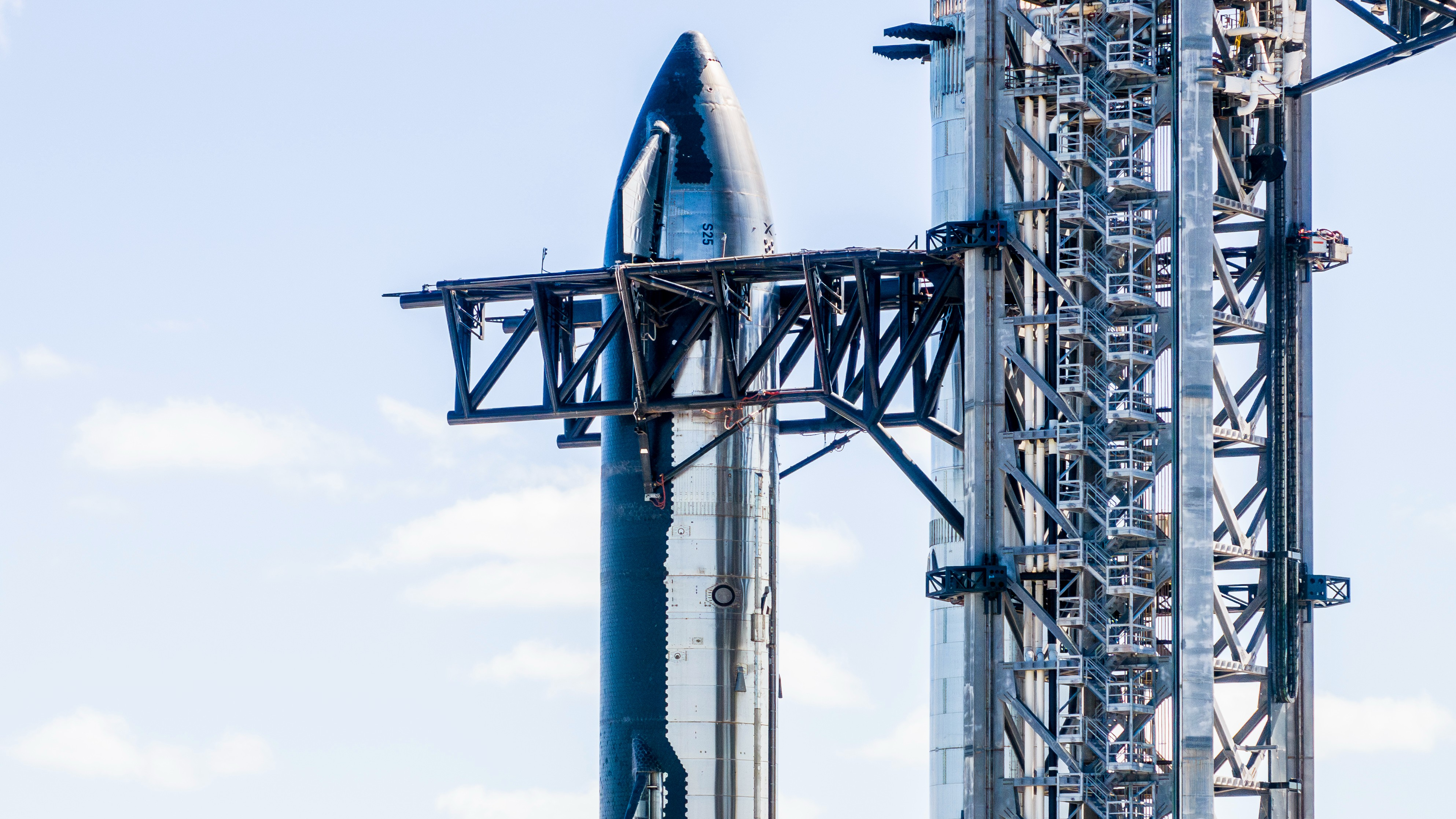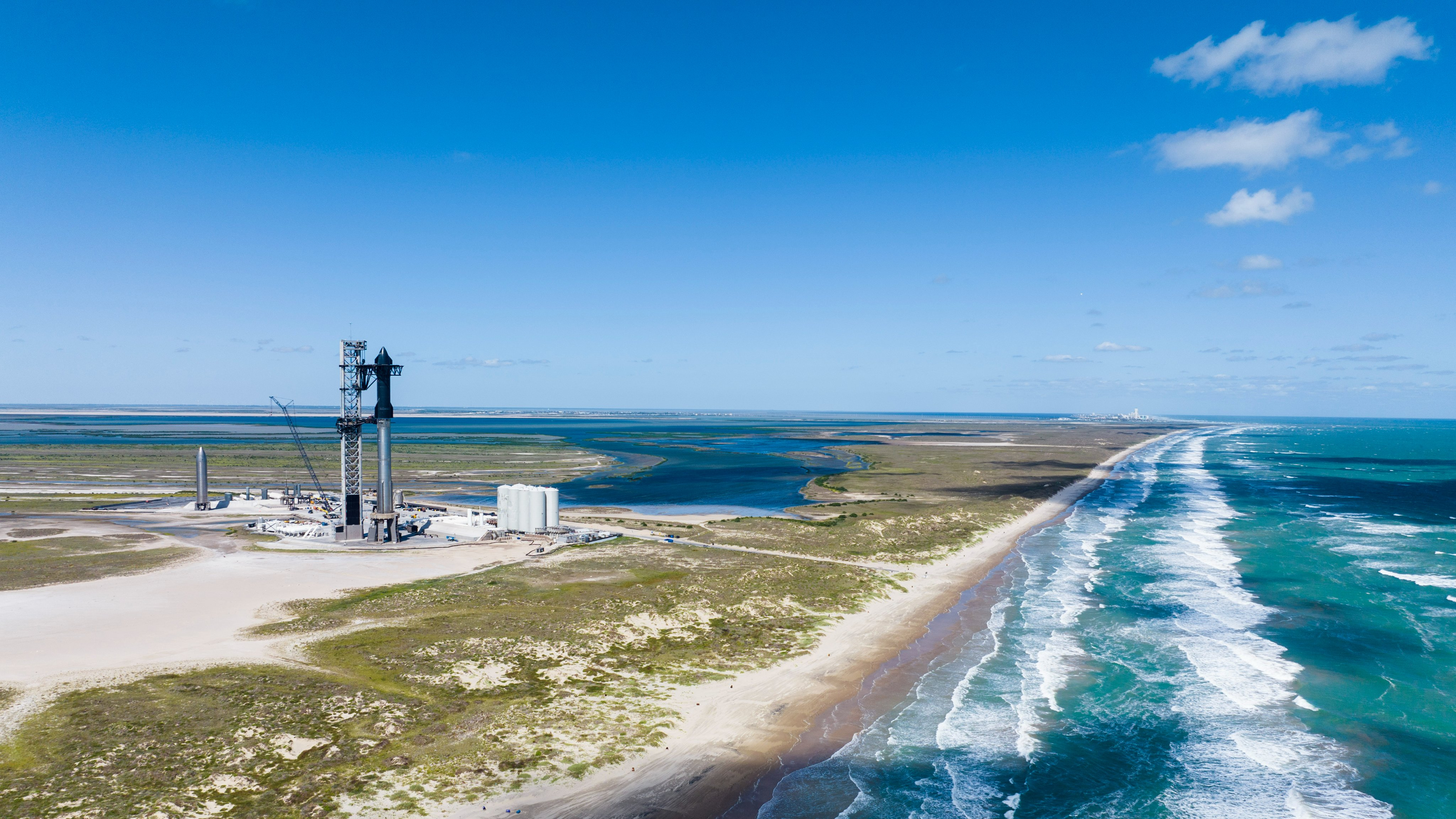
SpaceX has stacked its latest Starship prototype once again.
The work — which took place at Starbase, the company's facility on South Texas' Gulf Coast — is part of the leadup to Starship's second-ever test flight, which SpaceX hopes to launch soon.
"Starship fully stacked while team prepares for a launch rehearsal. We continue to work with the FAA on a launch license," SpaceX wrote Monday in a post on X (formerly known as Twitter), which also featured dazzling photos of the stacking activity.
Related: Relive SpaceX's explosive 1st Starship test in incredible launch photos

The FAA is the U.S. Federal Aviation Administration, which recently wrapped up its investigation of Starship's first-ever test flight, which occurred on April 20.
That flight aimed to send Starship's upper-stage spacecraft — known, somewhat confusingly, as Starship — partway around Earth, with splashdown targeted for the Pacific Ocean near Hawaii. But the vehicle suffered several problems shortly after liftoff, including the failure of its two stages to separate, and SpaceX destroyed it intentionally over the Gulf of Mexico.
Elon Musk has said that the latest Starship vehicle is ready to go from a technical standpoint; SpaceX has successfully test-fired the Raptor engines on both of its stages, for example. (The giant first-stage booster is called Super Heavy.)
Get the Space.com Newsletter
Breaking space news, the latest updates on rocket launches, skywatching events and more!
But, as the above post on X notes, the company is still waiting for a launch license from the FAA.

Starship stands nearly 400 feet tall (122 meters) when fully stacked. It's the biggest and most powerful rocket ever built, boasting significantly more thrust at liftoff than NASA's iconic Saturn V moon rocket.
Both of Starship's elements are designed to be fully and rapidly reusable, which Musk believes is the key breakthrough needed to make Mars settlement economically feasible.
SpaceX has stacked this particular Starship vehicle on Starbase's orbital launch mount before. Indeed, the company did so just last month.
Join our Space Forums to keep talking space on the latest missions, night sky and more! And if you have a news tip, correction or comment, let us know at: community@space.com.

Michael Wall is a Senior Space Writer with Space.com and joined the team in 2010. He primarily covers exoplanets, spaceflight and military space, but has been known to dabble in the space art beat. His book about the search for alien life, "Out There," was published on Nov. 13, 2018. Before becoming a science writer, Michael worked as a herpetologist and wildlife biologist. He has a Ph.D. in evolutionary biology from the University of Sydney, Australia, a bachelor's degree from the University of Arizona, and a graduate certificate in science writing from the University of California, Santa Cruz. To find out what his latest project is, you can follow Michael on Twitter.









